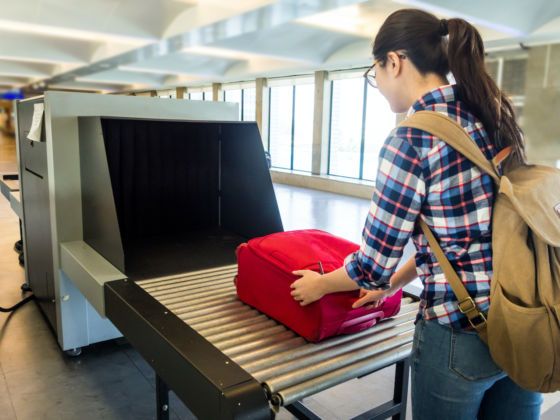In late May, the Transportation Security Administration (TSA) released new guidelines for passengers that reduced the amount of contact agents have with people and their belongings. Agents won’t touch boarding passes anymore, for example, and small personal items have to be put in carry-on bags instead of bins now. Also, for the foreseeable future, the TSA wants passengers to treat all food and snacks the same way as liquids.

The TSA Has a New Rule for Snacks in Carry-Ons. Here's Why.
The updated procedures require everyone to put carry-on food into a clear plastic bag and put it in a bin before screening. A TSA press release states that food can “often trigger an alarm during the screening process,” which would lead to a TSA officer having to pull the bag and inspect the food. These types of interactions are, to say the least, not an ideal fit with the social distancing recommendations in the era of COVID-19.
The TSA made these types of food requests in 2018 as well, though there was a varying level of enforcement at airports across the country because it was more of a recommendation. At the time, TSA spokesperson Mike England told the Washington Post that food can look like explosives in the scanners, hence the manual search requirement.
“It is the container or wrapper, not the food,” Jeff Hall, a senior consultant at the information security and privacy company Wesbey Associates, says via email. “I have been stopped a number of times in the precheck line due to the aluminum coated wrappers on my ThinkThin protein bars. Since the x-ray machine cannot see through the metallic wrapper, it looks like contraband or, worse, explosives.”
The TSA uses computed tomography (CT) to scan bags at most major airports. The machines operate similar to medical CT scanners, by creating a 3D image of objects inside a case. The image shows the mass and density of objects in the bag. Major deployment of CT scanners only started in 2018, though, so some airports still rely on machines that use 2D images that require more manual searches when an unidentified object, food or otherwise, passes through.
“Any food that is wrapped in a foil wrapper or bag creates a potential issue because x-rays cannot penetrate the wrapper/bag,” Hall writes. “This can include potato chips and other snack foods as well as some candy bars and, of course, my protein bars. If you put anything wrapped in aluminum foil or an aluminized baggie, that can also trigger a manual review of your luggage.”
So for the time being, try to squeeze all your snacks into a clear plastic bag before heading to the airport. Just make sure those snacks are on the approved food list.